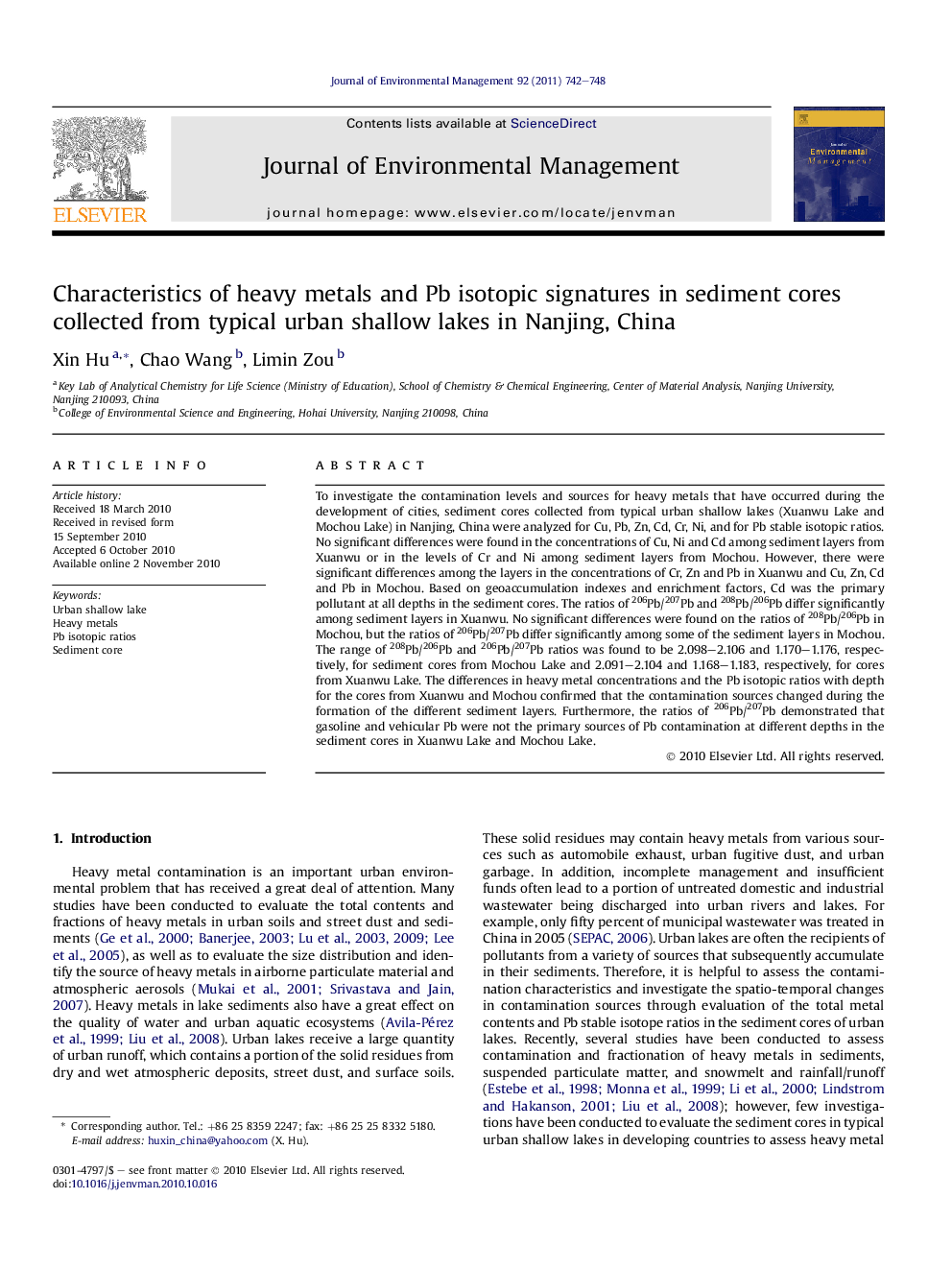| Article ID | Journal | Published Year | Pages | File Type |
|---|---|---|---|---|
| 10505536 | Journal of Environmental Management | 2011 | 7 Pages |
Abstract
To investigate the contamination levels and sources for heavy metals that have occurred during the development of cities, sediment cores collected from typical urban shallow lakes (Xuanwu Lake and Mochou Lake) in Nanjing, China were analyzed for Cu, Pb, Zn, Cd, Cr, Ni, and for Pb stable isotopic ratios. No significant differences were found in the concentrations of Cu, Ni and Cd among sediment layers from Xuanwu or in the levels of Cr and Ni among sediment layers from Mochou. However, there were significant differences among the layers in the concentrations of Cr, Zn and Pb in Xuanwu and Cu, Zn, Cd and Pb in Mochou. Based on geoaccumulation indexes and enrichment factors, Cd was the primary pollutant at all depths in the sediment cores. The ratios of 206Pb/207Pb and 208Pb/206Pb differ significantly among sediment layers in Xuanwu. No significant differences were found on the ratios of 208Pb/206Pb in Mochou, but the ratios of 206Pb/207Pb differ significantly among some of the sediment layers in Mochou. The range of 208Pb/206Pb and 206Pb/207Pb ratios was found to be 2.098-2.106 and 1.170-1.176, respectively, for sediment cores from Mochou Lake and 2.091-2.104 and 1.168-1.183, respectively, for cores from Xuanwu Lake. The differences in heavy metal concentrations and the Pb isotopic ratios with depth for the cores from Xuanwu and Mochou confirmed that the contamination sources changed during the formation of the different sediment layers. Furthermore, the ratios of 206Pb/207Pb demonstrated that gasoline and vehicular Pb were not the primary sources of Pb contamination at different depths in the sediment cores in Xuanwu Lake and Mochou Lake.
Related Topics
Physical Sciences and Engineering
Energy
Renewable Energy, Sustainability and the Environment
Authors
Xin Hu, Chao Wang, Limin Zou,
